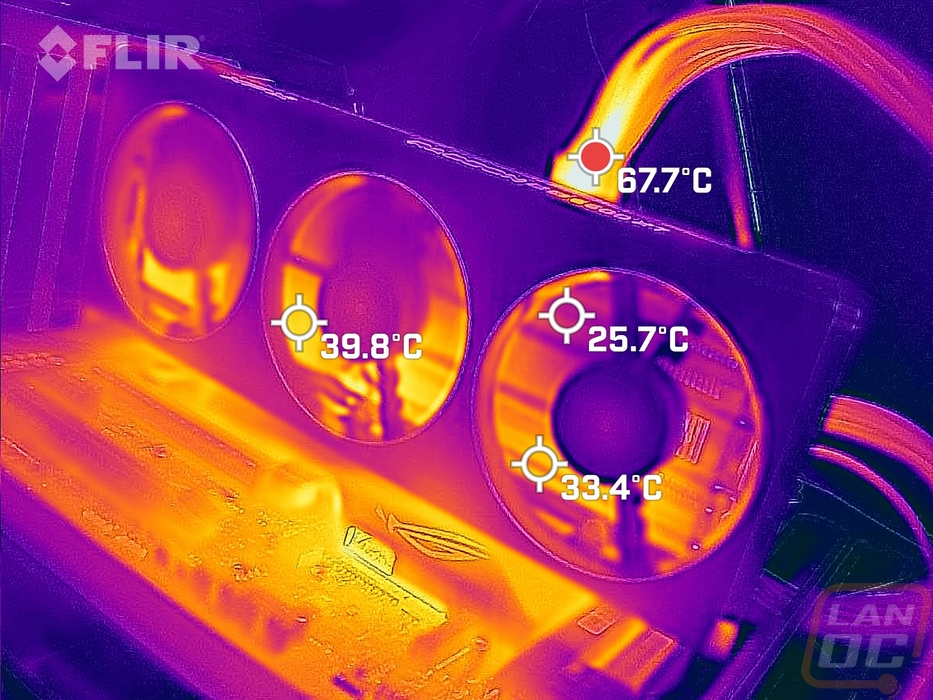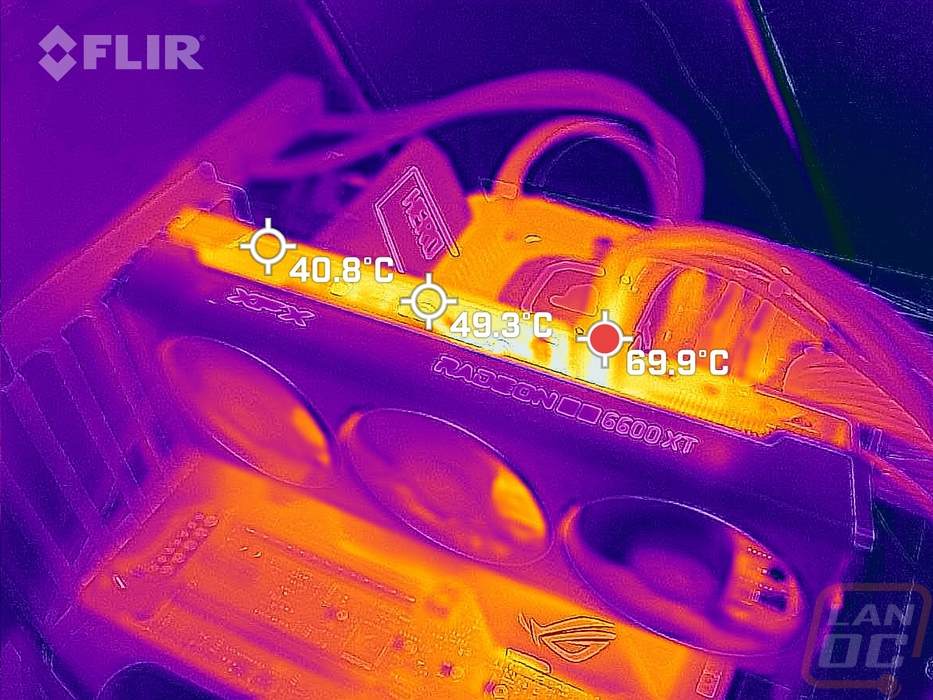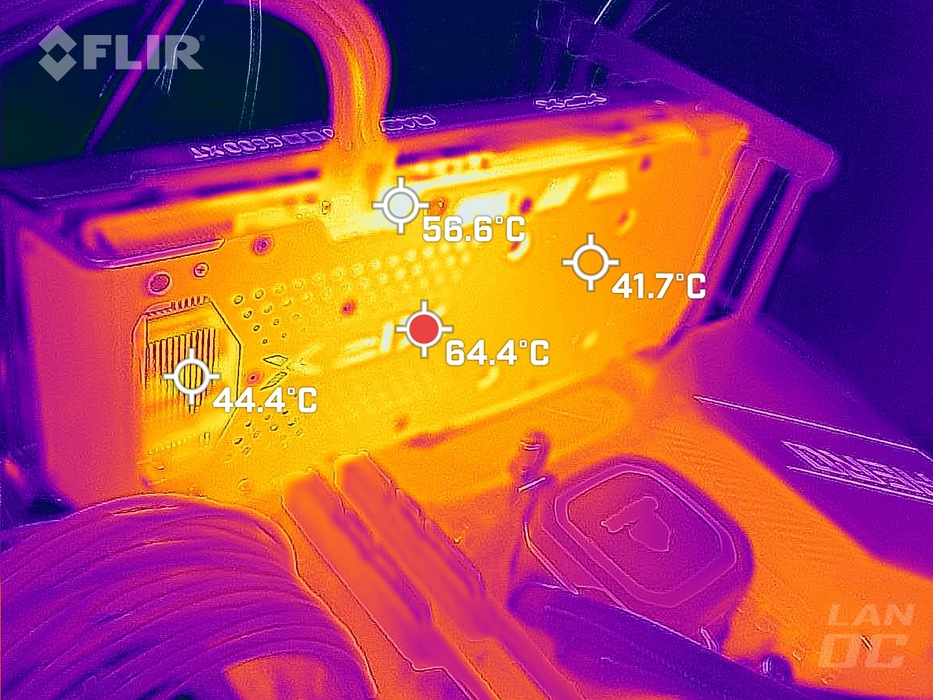Cooling Noise and Power
For my last few tests, rather than focusing on in game performance, I like to check out other aspects of performance. These are also the most important ways to differentiate the performance between cards that have the same GPU. To start things off I took a look at power usage. For this, I use our Kill-A-Watt hooked up to the test bench to record the total wattage of the system. I ran two tests with the first using 3DMark Fire Strike to put the system under a load similar to normal in game performance. Here our test system with the XFX MERC 308 RX 6600 XT Black pulled 335 watts which was right with the reference clocked RTX 3060 XC Black, not bad for an overclocked 6600 XT. In the AIDA64 stress test, the XFX MERC 308 RX 6600 XT Black moved up into the middle of the pack, pulling 287 watts, and was around 20 watts higher than the RTX 3060’s. I did also check out the GPUz reading for peak power draw at the chip which was spot on for the 145 watts.



My next round of tests were looking at noise levels. These are especially important to me because I can’t stand to listen to my PC whirling. Especially when I’m not in game and other applications are using the GPU. For my testing, though I first tested with the fan cranked up to 100% to get an idea of how loud it can get, then again at 50% to get an idea of its range. The XFX MERC 308 RX 6600 XT Black came in at 56.9 decibels on the 100% fan speed test which put it in the bottom half of the chart. For reference, the larger MERC319 6800 XT and 6700 XT ran up in the 65-decibel range so this was a significant improvement over the noise that the larger cards were capable of. This is about where I would expect to see the XFX MERC 308 RX 6600 XT Black and it was only a little higher than where the RPM results at 100% put the card. The more important test is the under load results where I run the AIDA64 stress test until the temperatures level out and then measure where the fan noise is at. Those results were a lot better than expected, especially for a 3 fan design at 34.4 decibels which is in the bottom ¼ of all cards tested.



To finish up my testing I of course had to check out the cooling performance. To do this I ran two different tests. I used AIDA64’s Stress Test run for a half-hour each to warm things up. Then I documented what temperature the GPU leveled out at with the stock fan profile and then again with the fans cranked up to 100%. With the stock profile, the XFX MERC 308 RX 6600 XT Black ran at 71c which isn’t exactly cool but also isn’t hot. Given how quiet this card performed when doing this test, I would say that XFX did a great job of finding a happy medium with the stock fan profile. The overclocked XFX MERC 308 RX 6600 XT Black. I did also run this same test with the fans all cranked up to 100% and you can see that the XFX MERC 308 RX 6600 XT Black did drop down in the charts, running much cooler at 50c. The delta between the two is 21c which is a big delta and shows that XFX is focusing a lot on overall noise with this profile but if you want the additional cooling the capabilities are there.



While running the stock fan profile testing I also took the time to get a few thermal images so we could see what is going on. The reading with a red dot is the hottest spot in each picture. I also added a few additional readings for reference. So like on the fan side, we can see just how much hotter the air that is blowing up and on to the power cable is compared to the readings through each of the fans. You can see that all of the fans are cooler up in the top half of the card and then the middle fan has the most heat overall with the GPU directly behind it. Up on the top edge the hottest spot is up on the power cable which tells us that the card is doing a good job pushing the air up and out, the readings at the PCB level are 20c cooler than the air blowing out. Then on the backplate, the hottest spot is right in the middle of the XFX logo which is where the backplate is open and the flir can get a reading right on the PCB. Up at the top in the center, the same can be seen but overall the backplate is at least transferring some of the heat out as it is running around the same temperatures as the PCB on the front side.





